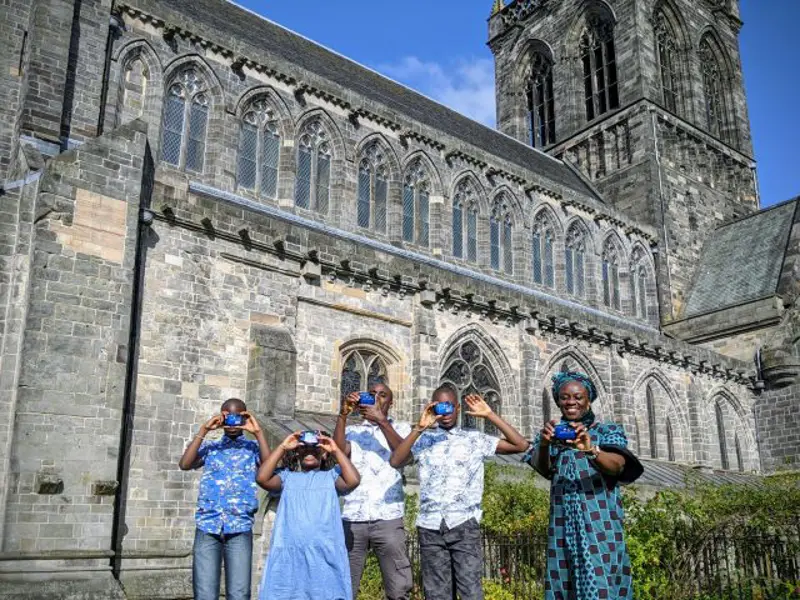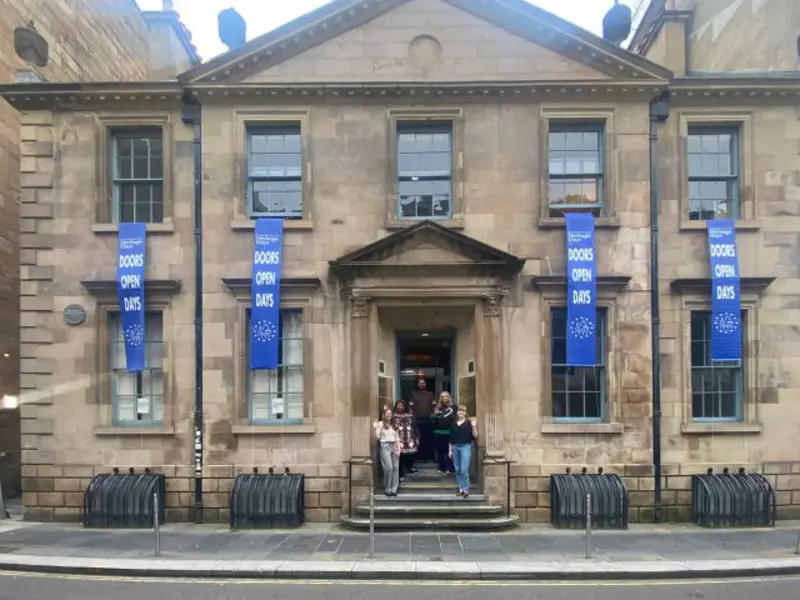What do we mean by civic?
The Scottish Civic Trust was set up in 1967 to help people connect to their local places and take a leading role in guiding their development.
'Civic' comes from the Latin civis, meaning ‘citizen’. The original use was in corona civica, a civic garland of oak leaves and acorns given in ancient Rome to a person who saved a fellow citizen’s life. This spirit of care and sacrifice for one’s community continues in the civic movement today.
For the Scottish Civic Trust, ‘civic’ means relating to a place and the people in it, particularly encouraging communities to look after their place and each other.
A brief history of the civic movement
The civic movement in Scotland has its roots in the 18th century, a time of turbulent social and economic change. The Act of Union in 1707 dramatically redefined Scottish politics and identity now that it was part of the wider United Kingdom. People began to focus on civil society – local, history, social and environmental improvement – as the basis of a new Scottish cultural identity without risk of being seen as anti-Union, which could be considered treasonous at the time.
Civic mindedness grew in the 19th century. There was a culture of philanthropy which saw private individuals take on a number of public services, from hospitals to education. Without public resources from a centralised government to meet the full range of needs of the British people, charities and voluntary organisations provided much-needed support. Wide political reform also meant that many working-class people enjoyed new voting rights, and joined community groups like friendly societies, merchant and trade associations and churches and religious groups – all of whom took an active role in civic life.
The 20th century saw rapid change for the historic places of Britain, with both increased legal protection and increased threat from new buildings and development. Changing urban and rural landscapes inspired the creation of place-based interest societies that wanted to protect traditional local identity and have a say in how places were changing.
Post-war building projects had a dramatic impact on places in Britain. In 1936, a survey was commissioned of Scotland’s towns and villages to record important historic buildings with the view of offering certain structures legal protection. When Britain’s cities and towns suffered large-scale damage during Second World War bombing raids, a comprehensive system for categorising historic structures – to prioritise what would be rebuilt and in what style – resulted in the passage of the Town and Country Planning Act 1947, which set out the modern listing process for all parts of the UK.
Despite increased legal protection via the listing process, or perhaps, increased by the fact that old buildings not listed could be seen as fair game for redevelopment, many structures disappeared throughout the 20th century. In some cases, whole neighbourhoods were levelled for high-occupancy, high-rise flats, commercial spaces and motorways.
During this period of sweeping change, the civic movement coalesced with the creation of The Civic Trust in England in 1957 and, ten years later in 1967, the creation of the Scottish Civic Trust. These organisations worked closely with grassroots local groups, representing national and regional interests and opposing the large-scale introduction of modernist architectural development. The Scottish Civic Trust’s aims were to encourage ‘high standards of architecture; preservation of buildings of artistic merit or historical interest; a sense of civic pride; and the elimination and prevention of ugliness whether arising from bad design, neglect or any other cause.’ Broadly, the Scottish Civic Trust still works towards these aims today.
Also in 1967, the Civic Amenities Act was passed, ‘to make further provision for the protection and improvement of buildings of architectural or historic interest and of the character of areas of such interest; for the preservation and planting of trees; and for the orderly disposal of disused vehicles and equipment and other rubbish.’ This legislation gave new protective powers to the historic environment, for example allowing the creation of conservation areas.
The right to a quality environment was safeguarded further with the passage of the Town and Country Planning (Scotland) Act in 1969, which gave increased protection to historic buildings by requiring planning departments in Scotland to consult with the SCT on every plan proposing the demolition of any of the country’s then 20,000 listed buildings, and levying penalties on those who disregarded the proper procedures.
Throughout the 1970s and 1980s, the civic movement gained momentum. The SCT and Scotland’s civic societies worked tirelessly to rescue important heritage sites, including Edinburgh New Town and New Lanark. The Trust also began authoring publications on how to sensitively re-use historic buildings.
The civic movement in Scotland was an important voice in late-20th century regeneration schemes, as well as serving an important role in raising awareness of the built environment. In 1990 Glasgow was named European City of Culture. As part of the programme for that year the Scottish Civic Trust held the first ever Doors Open Days festival in Scotland in Glasgow and Ayr, modelled on the European Heritage Days programme in France. Today, Doors Open Days remains the largest free festival of built heritage in Scotland.
The civic movement continues to be important today. Since the advent of ‘Big Society’, in which government devolves responsibility for decision-making to communities, local people are increasingly left in charge of directing local change, largely through voluntarism. Civic societies and other interest groups are key drivers of policy, planning and achieving local goals. Today, the Scottish Civic Trust network is made up of over 150 different local amenity groups who are active in many different ways in their local communities.
Sign up to our e-newsletter
Keep up to date with the latest from the Trust!







